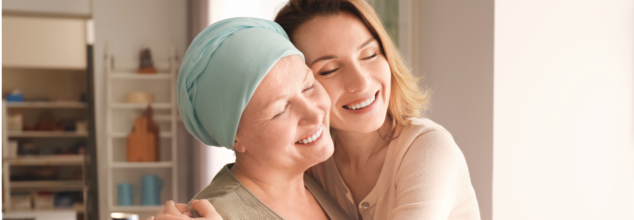- Health Conditions A-Z
- Health & Wellness
- Nutrition
- Fitness
- Health News
- Ayurveda
- Videos
- Medicine A-Z
- Parenting
- Web Stories
5 Natural Ingredients To Support Sensitive Skin During Cancer Treatments

Natural Ingredients To Support Sensitive Skin During Cancer Treatments
Fighting cancer is not an easy battle it takes a huge toll on your health, mind, and your appearance. The treatment can also have severe effects on your skin, and while you would want to use products to get your skin moisturised and nourished again you have to be very careful about what you use. Your skin is going through a lot because of the treatment therefore your best decision would be to switch to gentle products that not only work on your skin but also have a soothing effect on your mind as well.
Below are 5 natural products that you could use –
Natural Heena
Free of parabens, resorcinol, artificial colours, harsh chemicals, metallic salts, GMOs, ammonia and peroxide use heena that is enriched with green tea leaf and shikakai. Use this on your head and under the feet, this will cool your skin and sooth the burning sensation that the medicines might cause.
Sensitive Skin oil
Essential oils work magically to balance and harmonise the mind, body, emotions and the soul. This oil helps in calming and soothing the skin and at the same time helps to treat skin inflammations. You can apply 4-5 drops onto your clean face and neck every morning and night. Remember to do a patch test on your hand before applying it on your face.
Hydrating seaweed gel
Your skin might be too dry, stretchy, and flaky because of the treatments but turning to heavy creams is not the solution. You need a gentle soothing cream in a form of gel. Use a hydrating gel, it will purify and sooth your skin, leaving it a radiant, fresh, and dewy rich blend of vitamins and minerals found in seaweed and aloe vera extracts.
Lavender essential oil
This one is a universal oil and is used for uncountable things. This one is especially useful for cancer patients as it helps to soothe aches and pains, is an antidepressant and the best part is you can put a few drops of this oil on your pillow and it will help you sleep well.
White tea and chamomile face wash
This can work wonderfully when you feel your skin is feeling to dry and dull. This will deep clean your pores with White Tea and Soya milk extracts & exfoliating microbeads. Apply it smoothly on your face and massage it to the count of 60. Rinse it off properly and apply a later of hydrating seaweed gel after. This will make your skin fresh and nourished.
Disclaimer: The views expressed in this article are solely those of the author, do not substitute this with professionals advice. Always consult your/a doctor before beginning any new skincare regime.
1 in 7 Deaths In Delhi In 2023 Were Caused By Air Pollution, Revealed Study

Credits: Canva
A study has been released recently based on the analysis of the latest Global Burden of Disease (GBD) data that says that for 15 per cent of all deaths in Delhi in 2023 were caused by air pollution. The analysis was based on the data which was released by the Institute for Health Metrics and Evaluation (IHME) earlier this month. The data showed that around 17,188 deaths in the national capital were due to the long-term exposure to particulate matter (PM2.5) pollution. This is equivalent to 1 in 7 deaths in Delhi.
However, the Union Environment Ministry has said that there is "no conclusive evidence" that could directly link air pollution to mortality. The ministry said that it could be one of several contributing factors.
Toxic Air: A Public Health Emergency
Researchers at the Centre for Research on Energy and Clean Air (CREA), which analyzed the GBD data said the findings in fact point that there is a need to treat air pollution as a public health emergency.
Dr Manoj Kumar, who is an analyst at CREA said, "Air pollution must now be treated foremost as a public health issue, not just an environmental one. India already has over 250 epidemiological studies establishing the link between polluted air and a wide range of health impacts. The science is clear: what's needed now is decisive, coordinated action," said Dr Manoj Kumar, an analyst at CREA, as reported by NDTV.
How Can Someone Die By Air Pollution?
Particulate matter or PM2.5 and PM10 impacts human far beyond their lungs. When you inhale polluted air, the pollutants can travel from your lungs. It reaches the alveoli and enters the bloodstream. Overtime and after a long time of exposure, these particles could accumulate in blood vessels and reduce oxygen flow to heart and brain. This could trigger strokes, heart attacks, and other chronic illnesses.
Rise In Deaths By Air Pollution
As per the GBD data, air pollution related deaths in Delhi rose from 15,786 in 2018 to 17,188 in 2023. This is after the authorities had introduced several air quality management related plans. The deaths have been linked to high blood pressure and diabetes during the same period, however, those numbers are lower than air pollution.
Dr Kumar has also noted that the assumption most people have that air pollution is just a winter-specific problem is not right. Pollution is a year-round crisis, he points out and the "harmful exposure happens throughout the year". Dr Kumar notes that it is during winter when the speed drops and pollutants settle close to ground, which is why it becomes more visible during the winter.
According to CREA’s latest PM2.5 assessment for October 2025, Delhi emerged as the sixth most polluted city in India, logging an average PM2.5 level of 107 µg/m³ — nearly three times its September average. Haryana’s Dharuhera topped the list as the most polluted, with levels reaching 123 µg/m³. It is interesting to note that stubble burning's contribution in Delhi air pollution in October 2025 was 6% less than in other years.
Aggression And Self-Harm Could Be Due To Early Childhood Trauma: Study Reveals How Brain Rewires Itself

(Credit-Canva)
A new study revealed that childhood trauma could rewire’ your brain, the researchers suggest that this could lead to aggressive and self-harming behavior.
The study, led by Assistant Professor Sora Shin, identified the specific brain pathway that changes after someone experiences trauma early in life. The results were published in the journal Science Advances.
The researchers explained that their findings suggest that aggression and self-harm, while looking different on the outside, might actually come from the same place in the brain. They might both be a result of how the brain deals with pain signals.
Can Trauma Change Your Brain?
The new discovery is crucial because it’s the first time scientists have found a real biological process that explains how trauma, feeling sensitive to pain, and these harmful behaviors are all connected. This new understanding could lead to much more precise and effective treatments for people who struggle with conditions caused by trauma.
The researchers found that early trauma causes a specific communication line in the brain, linking the nucleus reuniens and the hippocampus, which is the pathway that regulates cognitive, executive and fear-learning process, to become overactive.
The increased activity of structures called calcium channels is what makes a person more likely to be aggressive and hurt themselves.
Both feeling upset and hurt physically seem to trigger these behaviors because the brain’s signals have been changed by trauma.
How Does Childhood Trauma Lead To Aggression?
Shin and her team research how bad experiences in childhood change the brain, leading to harmful behaviors in adulthood. Her previous work looked at how trauma can lead to things like binge eating.
Researchers questioned what really drives aggression and self-harm. Is it just feeling anxious or depressed? Or could there be a deeper reason, possibly related to how the brain handles pain, at the very core of these issues?
They explained that the trauma literally increased the activity of the calcium channel. The trauma changed the brain at a molecular level, causing the neuron to become hyperactive, meaning it was firing too much. This excessive activity in that specific circuit is what makes a person more susceptible to becoming aggressive and hurting themselves.
The research also suggested that pain, including emotional pain, might act as the doorway for these harmful behaviors to appear. By clearly identifying the physical connection in the brain between early trauma and its later effects, the study gives a much deeper understanding that goes beyond just asking people how they feel.
How Is Aggression and Self-Harm Linked?
In people who have gone through early childhood trauma, aggression and self-harm often happen at the same time. Doctors and therapists have known about this link for a while, mostly based on what patients tell them and what they observe in clinics.
To back this up, studies show that people who are treated for self-inflicted injuries are five times more likely to also be extremely aggressive. This strongly suggested that there was a single, underlying reason connecting the two behaviors.
Can This Help Treat Trauma?
Shin noted that extreme aggression is a serious social problem, and self-harm is a major concern for many people seeking treatment. She believes that their study provides clearer, more objective insights into the brain circuits that cause these outcomes. This understanding could eventually lead to the creation of more effective therapies to help people dealing with trauma's lasting impact.
Is President Trump Healthy? Ask Netizens As Trump Slept While Dr Oz Spoke On Dementia And Obesity At The Press Conference

Credits: X
Health concerns around President Donald Trump has again sparked as many noticed him sleeping during the Thursday Press Conference in the Oval Office. The press conference was held to announce a deal with drugmakers on lowering cost of obesity drugs.
While the meeting had to be cut short after a man collapsed, videos from before the very incident showed president Trump sitting with his eyes closed. He seemed to have slumped on his chair. Many on X observed his actions, sparking health concerns. One X user wrote: "Trump was literally slumped over asleep during this conference. No wonder they keeping on doing 6 month brain scans." While another user wrote: "Trump just sleeping slumped over in his chair..." Another user wrote: "Dr Oz linking obesity to dementia while Trump's slumped over at his desk is absolutely a choice..."
Many users also joked about looking at his brain scans, as one of the users wrote: "What I would give to see that MRI report!" Another noted: "Trump looks seriously unwell. There are definitely medical issues being hidden from the public."
Trump Dozing Off At Official Announcements
This is not the first time President Trump has dozed off during an official announcement. Donald Trump appeared to momentarily doze off during a press conference which was held with Israeli Prime Minister Benjamin Netanyahu. Media outlets have reported that the president struggled with his words and when it was Netanyahu's turn to speak, Trump looked completely disassociated, and even appeared to doze off momentarily. Trump was seen "jolting as he woke himself up".
The video from the press conference shows the president standing at the podium with his eyes closed, and within a few seconds, he was startled, blinking his eye, while he tapped his fingers on the podium in a manner to keep himself awake.
Then a few seconds later again, Trump appeared to have been sleeping again, but this time he moved his body to wake himself back again.
These clips from the past and the recent press conference have again sparked concerns around the president's health. However, no official statement on Trump's health has been released. In fact, his physician had pronounced him in "excellent overall health".
However, his past behaviors have raised concerned about his cognitive decline.
After two psychologists raised questions about the US President Donald Trump's mental health, saying that he showed signs of frontotemporal dementia (FTD), questions about his cognitive health is again intensified after Dr Narinder Kapur, a consultant neuropsychologist and visiting professor at the University College London said that president's behavior over the last six months has been "quite odd and strange," as reported by Express, UK.
Kapur said that Trump's suggestion that Canada should become the 51st US state. and his desire to "take over Greenland", and his controversial comments linking autism with paracetamol are really "bizarre". “Even though he’s probably been led a bit by [Robert F.] Kennedy [Jr.] on that, still for Trump to say the things he did was really quite odd and bizarre,” he said.
While Kapur did not diagnose Trump with dementia, he did suggest the possibility of frontotemporal dementia. “If one was thinking about the various possible dementias he’s got, certainly frontotemporal dementia is one of them, because some of his behavior has been really quite bizarre,” he said, adding that an Alzheimer’s test would help clarify concerns.
© 2024 Bennett, Coleman & Company Limited

